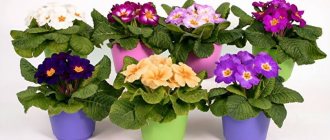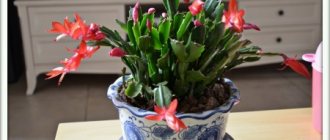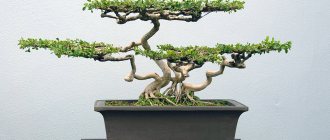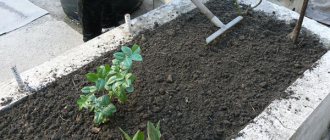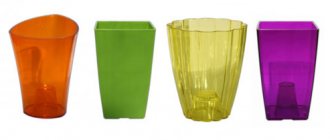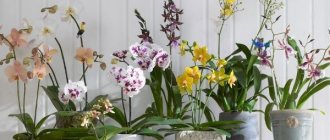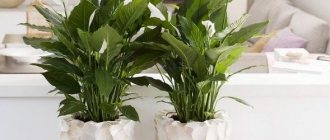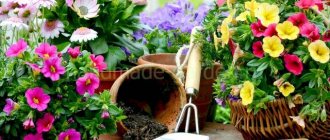Almost all of us have house plants. Green pets give us their beauty, improve health and mood, and purify the air. But, in order for the flower to look great and delight the owner, you need to take care of creating the best conditions for its maintenance.
Choosing a pot for a home plant is one of the very first and most important steps in home floristry. This is exactly what we will talk about in the article. You will learn how to choose a flower pot and what to pay special attention to when buying a container for a plant. So let's get started.
Pot or planter
For experienced flower growers, the question of what is the difference between a flower pot and a flowerpot is completely obvious. But many novice florists sometimes cannot distinguish one from the other and, as a result, acquire something completely unnecessary to them.
The most important difference between a flowerpot and a flower pot is their functional purpose. A pot is a vessel in which a plant is planted. A flower pot is a decorative container, its main task is to hide an unattractive flower pot.
[!] Translated from French, cache-pot means hidden pot
It is very easy to distinguish between a pot and a flowerpot when purchasing, despite the fact that at first glance they are exactly the same. The pot has one or more drainage holes at the bottom and a separate tray for draining excess water. A flowerpot is a solid vessel without a tray or holes.
If you need a container specifically for planting a plant, your choice is a flower pot. If your plant has already been planted and you just need to decorate unattractive flower dishes, pay attention to the flower pots.
How to choose the right flower pot?
So, you bought a houseplant or the plants simply grew bigger and became cramped in the old pot; you need to replant them. Especially purchased indoor flowers are often sold in containers for transportation, transplanted into a new pot
simply necessary.
Flower pot sizes
Let's decide on the size of the flower pot. If the plants are tall and mature with massive leaves, they will need a large pot (for example, monstera, ficus, clerodendrum).
Plants such as violets, gloxinia, pelargonium and the like are better suited to small flower pots
.
Pay attention to the diameter and height of the pot. The height of the flower pot should be at least 1/3 of the height
the plant itself.
The diameter of the pot is selected as follows: the wider the crown of the plant, the wider the diameter of the flower pot. For plants with a height of 30 cm or more, a pot with a diameter of 20 cm or more is suitable. The ideal proportions of a pot are obtained when the diameter is equal to 2/3 of its height
.
When choosing a pot for very tall plants
, such as common myrtle, pay attention to the diameter of the base, it should be at least 1/3 of the height of the plant.
Return to contents
Pot sizes
It is important to pay attention not only to the material from which the product is made, but also to take into account a number of other characteristics. The size must be suitable for the plant. A flower in a container that is too small will soon need to be replanted again. In an overly large pot, due to improper watering, the plant will quickly wither - the soil will sour and the roots will begin to rot. The need for replanting is indicated by the rapid drying of the soil after watering. In this case, a larger capacity is needed. If the plant is weakened and there are signs of wilting, then it may need to be transplanted into a smaller pot. Before placing the flower in a new house, do not forget to replace the soil and remove damaged roots.
The choice of form depends on the characteristics of the root system. If it is superficial, like succulents and cacti, then a deep container is not required. Ferns and spathiphylliums are suitable for wide pots, in which the roots can easily grow to the sides. Myrtle and palm trees have a tap root system. The best option for them is deep pots. In the store, pay attention to the stability of goods and the presence of drainage holes. If the kit does not come with a tray, think in advance what you will use instead.
The choice of pot determines how the plant will feel. Therefore, choose the appropriate option, taking into account all the nuances - from the material to the shape. Then the flowers on the windowsill will feel great and delight you.
Flower pots – what material to choose from?
Plants feel especially comfortable in clay and ceramic pots.
. One of the disadvantages of such a pot is fragility. It may break if dropped, you need to be careful. When reusing such pots, they must be disinfected.
For larger plants that sit on the floor, buy a plastic pot.
, it is much lighter than ceramic and it will be easier to move the plant.
The most practical and relatively cheap plastic pots
. Today there is a huge selection of plastic flower pots in stores.
Return to contents
Video – Flower pots
Ceramic pots
Recently, fakes made of plaster have often been found in stores. It’s easy to check the quality – just lightly tap the pot. The sound when hitting a plaster product will be muffled. The main advantage of ceramic containers is their natural material, which adapts to any temperature. In the summer heat the plant will be cool, and on a cold winter evening it will be warm. Ceramic pots are suitable for both small indoor flowers and large trees. Thanks to the variety of shapes and colors, it’s easy to choose a cute container for plants that will organically fit into any interior.
There are also disadvantages to ceramic products - they are very fragile and can break to pieces the first time they fall. So for families with children and active pets, this option is not the best. It is more difficult to care for ceramic pots than plastic ones - they often develop salt deposits, which are not easy to get rid of.
Choosing the right flower pot
If you are going to replant and divide the plant bush, you will need several small pots.
When transplanting adult plants, choose a pot 1.5-2 cm larger
than the old pot. When replanting plants, a new soil mixture is partially added.
When replanting a young plant that continues to grow, you will need a pot 3 cm larger than the previous one.
When replanting fast-growing or large plants, and when the next replanting occurs in 2-3 years, select a pot 4 cm larger than the old one
.
If you have old flower pots in stock and want to use them, they must be disinfected and then dried. Chlorine-containing products are suitable for disinfection.
Return to contents
What pots should I plant indoor plants in?
Which plant needs which pot: ph
The tubers of such a houseplant for planting in a Zamioculcas pot are characterized by the fact that they grow very strongly, usually close to the walls of the pot. Now imagine what will happen if you plant it in a round pot with narrowed edges? When repotting, you will have no choice but to break the pot. Thus, Zamioculcas requires trapezoid-shaped containers with flaring edges.
Family Araceae
This family includes plants such as anthurium, spathiphyllum, aglaonema, etc. All these plants prefer close space for their roots.
What pots for indoor orchid plants
For epiphytic orchids (phalaenopsis, vanda) there are special transparent pots. Their roots, just like their leaves, require light. If the orchid grows in an opaque pot, you need to make sure that the holes on the pot are not only on the bottom, but also on the side.
What pots for indoor plants nolina
Nolina is one of those plants that are characterized by a small root system combined with a large flower size. Therefore, it is important to choose a wide, low pot. For stability, this pot can be placed in a larger one and the resulting space filled with stones.
Are drainage holes in flower pots necessary or not?
Flower pots for growing plants must have drainage holes
to drain excess water.
But there are pots that serve as decorative ones - flowerpots without drainage holes. The main disadvantage of pots is the accumulation of excess water at the bottom after watering, which leads to rotting of the roots and the development of various diseases.
If you purchased a pot without a hole, you can use a drill to carefully drill it. There should be one hole in the pot for every 10 cm2 of volume.
Material
Flower pots today are made from different materials: clay, plastic, metal and even glass. The flowery-blog.ru website will tell you what their differences and advantages are?
Ceramic
Clay pots are considered the most practical; they have the ability to allow air to pass through and evaporate excess moisture. In addition, clay can withstand minor temperature changes. Such a container will not turn over, given its weight, but if it turns over, it will most likely break. However, when completely coated on the outside with glaze, ceramic dishes partially lose their properties! It is also worth considering the price, because natural materials are always more expensive!
By the way , before planting a plant in a clay pot, wet its walls with water from the inside, otherwise the porous clay will absorb moisture from the soil after the first watering.
Pots - how to use?
Such pots perform a decorative function. Flowerpots are made from various materials: ceramics, plastic, wood.
Often flower pots with plants are placed in flowerpots. Flowerpots give an interesting aesthetic appearance to the interior, but excess water must be drained every time after watering.
You can put moss between the walls of the flowerpot and pot, which will absorb excess water after watering, gradually evaporating the moisture. If you will be using a flowerpot
, as a way to increase humidity, you need to choose a size 3-4 cm wider than the pot that will stand inside.
Return to contents
Clay pots
Beginning gardeners are recommended to purchase pots made of clay. In this case, there will be no problems with air supply to the roots, and the moisture will evaporate quickly. The exception is glazed containers. Although they look more aesthetically pleasing, their characteristics are no better than plastic ones. Difficulties may arise during plant transplantation. Often the root system literally “grows” to the clay walls, which is why it has to be injured. Another drawback of such pots is the small palette of colors.
Pots - types and choice
Classic flowerpots in pastel or neutral colors can highlight the beauty of plants.
Bright flowerpots will push the beauty of plants into the background, attracting with their original appearance.
Plain flowerpots
They will bring a certain style to your home, but sometimes, a strict selection of pots of the same color becomes monotonous and boring.
Many people like to decorate flowerpots with their own hands using various materials (pebbles, shells, beads) and needlework techniques.
Return to contents
Requirements for pots for seedlings
In order for the plant to grow strong and healthy, the conditions for planting and germination of shoots must be observed. In this regard, certain requirements are imposed on seedling pots:
- Maintaining optimal humidity levels. The plant pot must contain special holes at the bottom of the container. They allow you to keep the soil moist for a long time and at the same time remove excess moisture.
- The pots must be deep enough. The walls of the container should not interfere with root growth. If the pot is shallow, then the roots of the plant grow and become tangled into a ball. This in turn leads to a deterioration in the ability to absorb nutrients and slower plant growth.
- The neck of the pot should be wide enough to allow the plant to be replanted along with a lump of earth.
- Pots should be stable and compact in size. Seedlings are usually grown in large volumes and under limited conditions. Therefore, it is important to place as many pots as possible in a small area.
Helpful information
Daria Vorontsova
Amateur gardener. He is interested in growing various greens at home.
There are also pots designed for growing specific crops. For example, pots for bulbs are a grid with high sides. If necessary, they can be easily removed from the soil along with the bulbs without additional digging of the ground.
